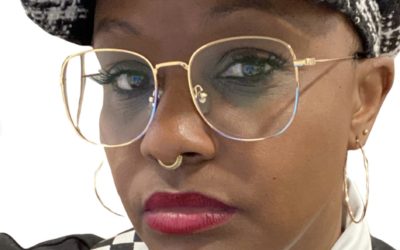Samantha (Sam) Dougherty is a rising senior at Pennsylvania State University who is majoring in political science and minoring in media studies. In alignment with her major, she has written a paper on the intersection of political science with art.
Read it below.
Whether it be through protest or praise, art creates space for political conversation. As a political science student, art is not a typical component of many collegiate lectures. My experience in learning about art stems from its connection to activism and the role that it has played in social progression.
The relationship between art and politics fosters a communal space for important messages and stories to be shared. In this sense, art can be used as a vehicle to display political content. Politics and art are both forms of expression, so their collaboration creates a harmonious opportunity for public communication. Many artists use their talents to share messages that are important to them or issues that are prominent in society. The beauty of an artist’s skill allows others to not only learn about a political message, but also to feel inspired or moved by it.
Although not definitively essential to each other’s existence, the two subjects rest on the same foundational pillars: freedom of speech and freedom of expression. The right to these political freedoms is crucial to the existence of art in today’s society. Freedom to create allows artistic innovation to continue for years to come. Particularly in the United States, the guarantee of these freedoms blocks the risk of censorship for most works of art. An article regarding modern day art censorship notes, “In drafting the Constitution, the framers acknowledged the importance of artistic expression, going so far as to define promotion of the “useful arts” as one of government’s purposes” (Teninbaum, Art Censorship). The recognition of the importance of the arts, at such an early point in time, underscores the essential nature of the craft. The continuation of freedom of speech and expression will allow art to continue to make an impact in the global political sphere.
Throughout history, artists have used their platforms and skills to create within the context of their time periods. More specifically, artists have spoken out on political issues plaguing their point in history; some of which are well-known pieces of memorabilia. Artist Henry Mayer created a piece in 1915, in the midst of the American women’s suffrage movement. Called The Awakening, the illustration depicts a map of the United States with a woman walking across the states holding a torch. It shows the names of the Western states, but the Eastern states are replaced by other women reaching for the walking woman with the torch. The illustration symbolizes the then-current state of the suffrage movement, with the west coast already achieving the female right to vote and the east coast yearning for the same.

The Awakening (1915)
Henry Mayer
Source: Library of Congress
The Awakening is a powerful representation of the time period and the fight by American women to achieve such a basic democratic right. Pieces like this are strong examples of artists using their current political context to express their talents and make an impactful statement.
Another example of political art comes from an anonymous street artist called Banksy. Although he is mainly based in England, he famously created political street art murals across the city of Los Angeles, California in 2011. One of his works, called Crayon House Foreclosure, depicts a young girl in black and white standing next to a colorful house that appears to have been drawn in crayon. The childish home is being boarded up by another stenciled figure, preventing the girl from going inside.
The mural is a representation of the brutal issue of foreclosures that left millions of Americans homeless in the early 2000s. According to Occupy, which uses an image of Crayon House Foreclosure to illustrate an article on this topic, “From 2005 to 2010, some 9.3 million mortgage foreclosure notices were sent to households in the U.S., amounting to about 35 million people losing their homes.” (Sassen, Inequality? We Need a New Word). With little government assistance, the foreclosure crisis was devastating for residents of Los Angeles.
Banksy’s work spoke to the issue and created a conversation about the problem in the community. This social spark is the beauty of political art and truly is capable of bridging a connection between the artists and community.
Featured image: © Markjonathank | Dreamstime.com
Political art with three empty white sweatshirts on display in front of a house in Washington D.C. The political statement includes signage stating `Equality for All, Resist Fascism and Bigotry`.


